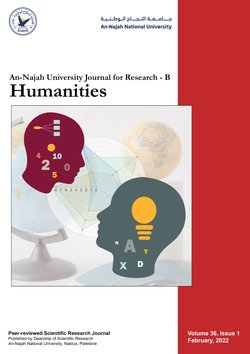The Role of Demographic and Personal Variables on the Palestinian Students’ Perceptions of a Blended Learning English Class
Authors:
Article info
2013-02-12
2013-09-05
2013-09-05
993 - 1026
Keywords
Abstract
This paper aimed at investigating Hebron University students' perceptions towards blended learning environment. Specifically, the study aimed to examine their attitude to the blended learning process as correlated to their gender, number of hours spent online, and anxiety. Moreover, it examined if there is a relationship between frequency of participation and attitude. In addition, it examined if there is a correlation between frequency of participation and performance in a blended learning course. The study was conducted in the second semester of the academic year 2009/2010. It included (74) students enrolled in a blended integrated language skills course offered at the English Department at Hebron University, Palestine. A questionnaire was designed to measure the students' perceptions towards blended learning which consisted of three attitudinal domains: convenience, perceptions, and online activities. The final grade of the students in the course is used to see if there is correlation between participation and grade. The findings revealed that there were no significant relationships between the three attitudinal domains and gender. However, there were significant relationships between the three attitudinal domains and anxiety as well as the number of hours spent online for academic purposes. Moreover, there were significant differences in the students’ positive attitudes due to the frequency of online participation. The more frequently the students sent messages, the more positively they viewed the process. Finally, a positive correlation was found between frequency of participation as reflected by the number of sent e-mails and the final grade.
Farrah, M. (2013). The Role of Demographic and Personal Variables on the Palestinian Students’ Perceptions of a Blended Learning English Class. An-Najah University Journal for Research - B (Humanities), 28(4), 993–1026. https://doi.org/10.35552/0247-028-004-010
[1]M. Farrah, “The Role of Demographic and Personal Variables on the Palestinian Students’ Perceptions of a Blended Learning English Class,” An-Najah University Journal for Research - B (Humanities), vol. 28, no. 4, pp. 993–1026, Sep. 2013, doi: 10.35552/0247-028-004-010.
Farrah, Mohammed. “The Role of Demographic and Personal Variables on the Palestinian Students’ Perceptions of a Blended Learning English Class.” An-Najah University Journal for Research - B (Humanities), vol. 28, no. 4, Sept. 2013, pp. 993–1026. Crossref, https://doi.org/10.35552/0247-028-004-010.
1.Farrah M. The Role of Demographic and Personal Variables on the Palestinian Students’ Perceptions of a Blended Learning English Class. An-Najah University Journal for Research - B (Humanities) [Internet]. 2013 Sep;28(4):993–1026. Available from: http://dx.doi.org/10.35552/0247-028-004-010
Farrah, Mohammed. “The Role of Demographic and Personal Variables on the Palestinian Students’ Perceptions of a Blended Learning English Class.” An-Najah University Journal for Research - B (Humanities) 28, no. 4 (September 2013): 993–1026. https://doi.org/10.35552/0247-028-004-010.
The Role of Demographic and Personal Variables on the Palestinian Students’ Perceptions of a Blended Learning English Class
المؤلفون:
معلومات المقال
2013-02-12
2013-09-05
2013-09-05
993 - 1026
الكلمات الإفتتاحية
الملخص
This paper aimed at investigating Hebron University students' perceptions towards blended learning environment. Specifically, the study aimed to examine their attitude to the blended learning process as correlated to their gender, number of hours spent online, and anxiety. Moreover, it examined if there is a relationship between frequency of participation and attitude. In addition, it examined if there is a correlation between frequency of participation and performance in a blended learning course. The study was conducted in the second semester of the academic year 2009/2010. It included (74) students enrolled in a blended integrated language skills course offered at the English Department at Hebron University, Palestine. A questionnaire was designed to measure the students' perceptions towards blended learning which consisted of three attitudinal domains: convenience, perceptions, and online activities. The final grade of the students in the course is used to see if there is correlation between participation and grade. The findings revealed that there were no significant relationships between the three attitudinal domains and gender. However, there were significant relationships between the three attitudinal domains and anxiety as well as the number of hours spent online for academic purposes. Moreover, there were significant differences in the students’ positive attitudes due to the frequency of online participation. The more frequently the students sent messages, the more positively they viewed the process. Finally, a positive correlation was found between frequency of participation as reflected by the number of sent e-mails and the final grade.
Farrah, M. (2013). The Role of Demographic and Personal Variables on the Palestinian Students’ Perceptions of a Blended Learning English Class. An-Najah University Journal for Research - B (Humanities), 28(4), 993–1026. https://doi.org/10.35552/0247-028-004-010
[1]M. Farrah, “The Role of Demographic and Personal Variables on the Palestinian Students’ Perceptions of a Blended Learning English Class,” An-Najah University Journal for Research - B (Humanities), vol. 28, no. 4, pp. 993–1026, Sep. 2013, doi: 10.35552/0247-028-004-010.
Farrah, Mohammed. “The Role of Demographic and Personal Variables on the Palestinian Students’ Perceptions of a Blended Learning English Class.” An-Najah University Journal for Research - B (Humanities), vol. 28, no. 4, Sept. 2013, pp. 993–1026. Crossref, https://doi.org/10.35552/0247-028-004-010.
1.Farrah M. The Role of Demographic and Personal Variables on the Palestinian Students’ Perceptions of a Blended Learning English Class. An-Najah University Journal for Research - B (Humanities) [Internet]. 2013 Sep;28(4):993–1026. Available from: http://dx.doi.org/10.35552/0247-028-004-010
Farrah, Mohammed. “The Role of Demographic and Personal Variables on the Palestinian Students’ Perceptions of a Blended Learning English Class.” An-Najah University Journal for Research - B (Humanities) 28, no. 4 (September 2013): 993–1026. https://doi.org/10.35552/0247-028-004-010.

Since 2019
Cite Score (Scopus): 0.5
Time to First Decision: 7 Days
Submission to Acceptance: 60 Days
Acceptance to Publication: 10 Days
Acceptance Rate: 20%
Call for Papers:
Special Issue on
Innovative Assessment in the Age of AI: Strategies for Quality
Why should you
Publish With Us?
An-Najah National University
Nablus, Palestine
Nablus, Palestine
- P.O. Box
- 7, 707
- Fax
- (970)(9)2345982
- Tel.
- (970)(9)2345560
- (970)(9)2345113/5/6/7-Ext. 2628
- [email protected]
- EIC
- Prof. Waleed Sweileh
